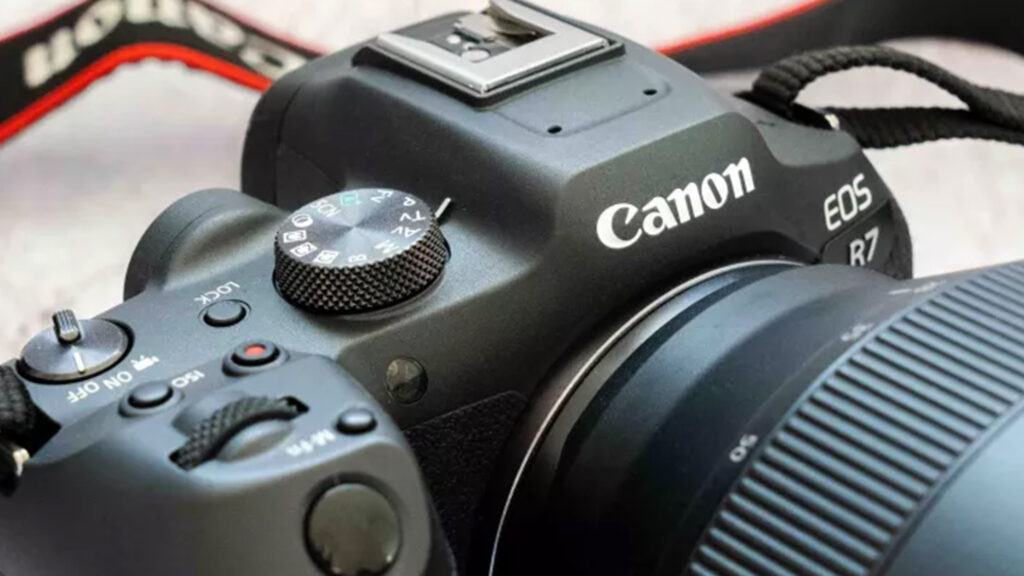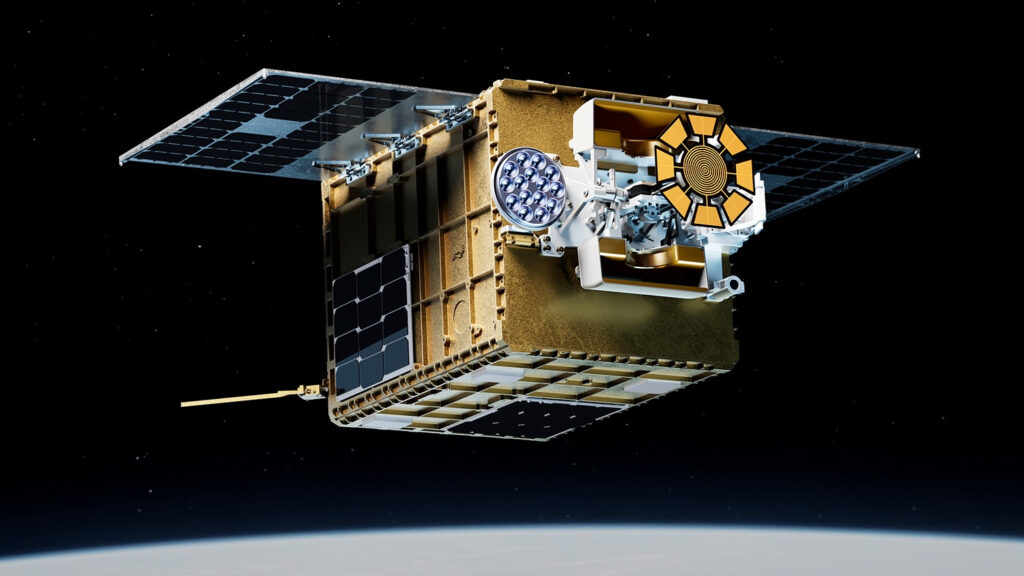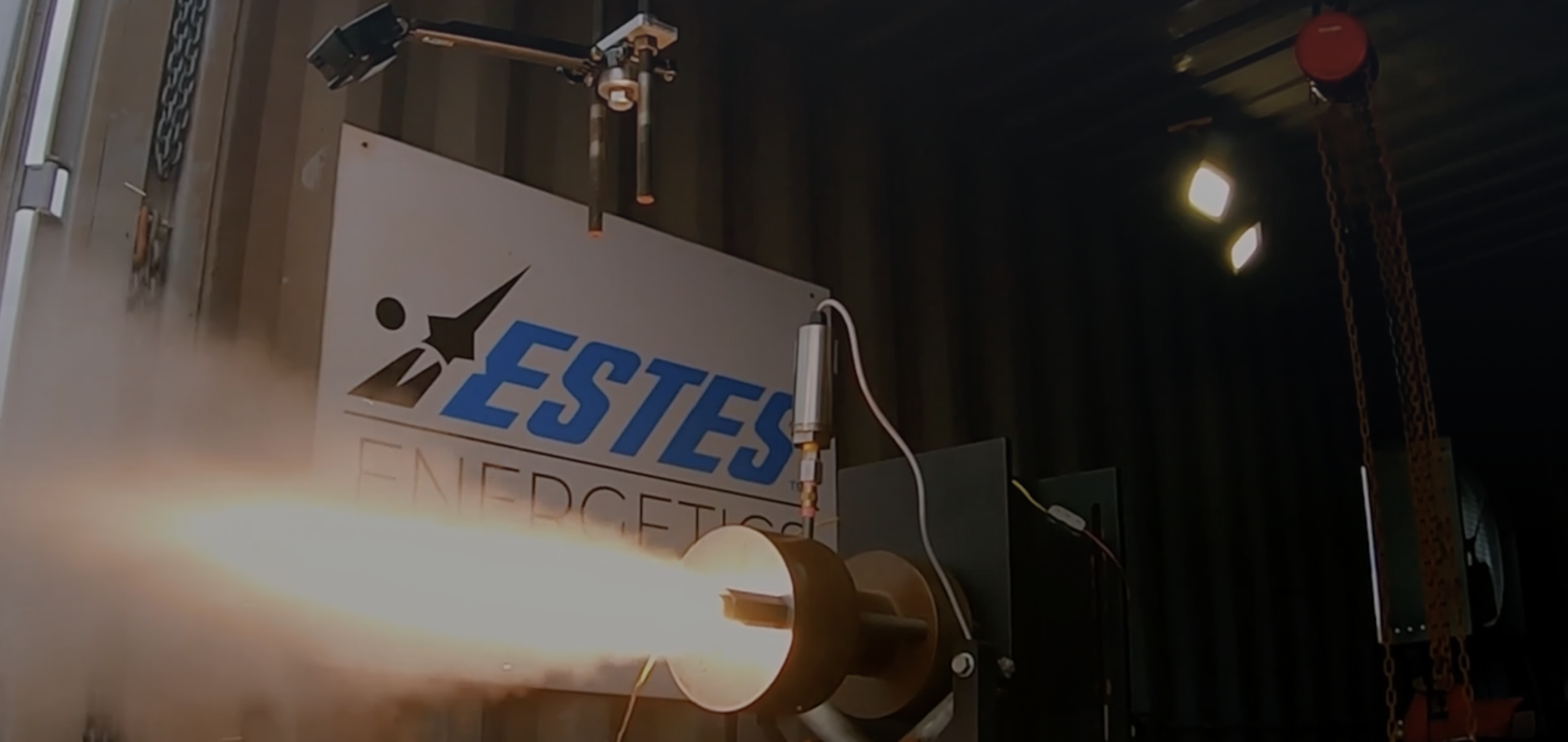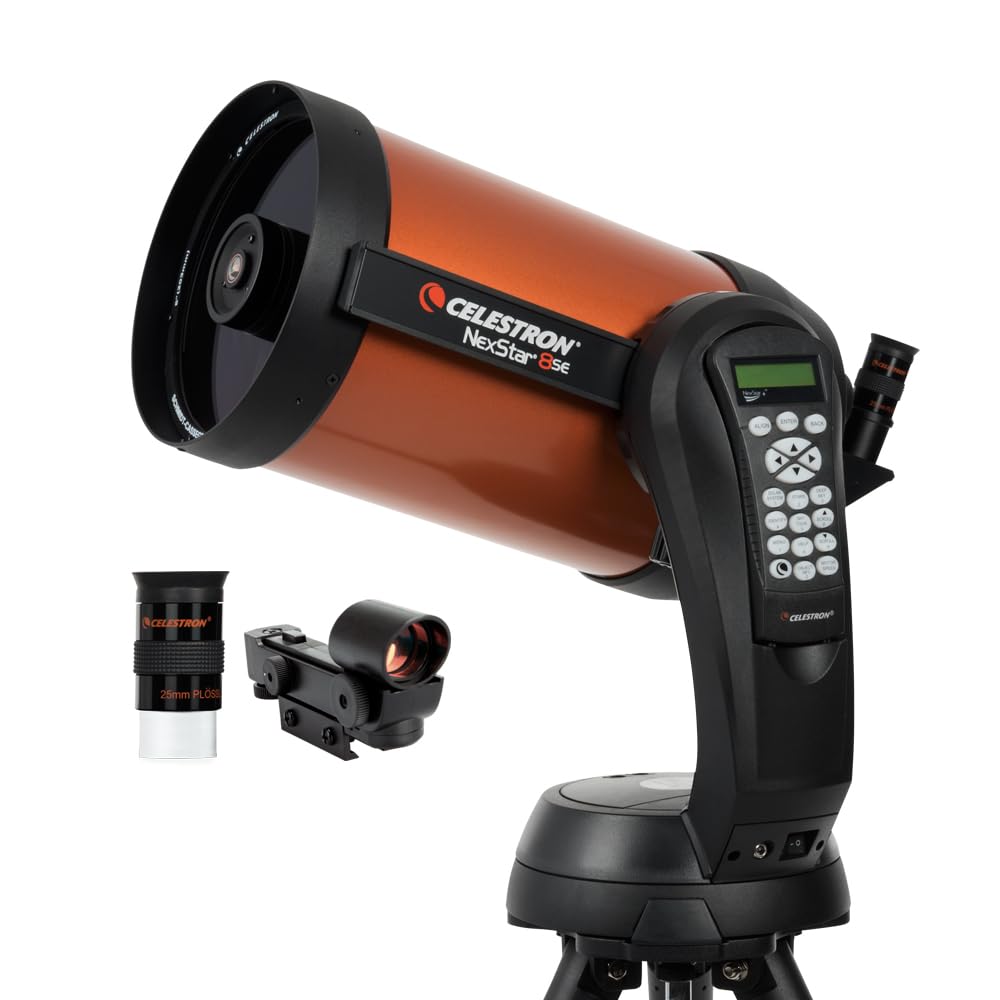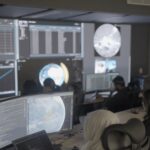Now Reading: Nikon Monarch M7 8×42 binocular review
-
01
Nikon Monarch M7 8×42 binocular review
Nikon Monarch M7 8×42 binocular review

The Monarch M7 8×42 binoculars are ideal for those looking to invest in a quality pair of binoculars but don’t have the cash to splash on the higher-end models that break into four figures. We were super impressed with them so they may gain a place in our best binoculars guide.
The Monarch M7 binocular line comes in 8×30, 8×42, 10×30 and 10×42 models and, for stargazing, we’d normally recommend higher magnifications and larger objective lenses. However, the 8×42 pair that we’ve reviewed here perform excellently for their price point. They are sharp, bright and the 8x magnification is best suited to star hopping and getting a closer look at the constellations we first learn as beginners. That makes them suited to beginner to middling astronomers and those with friends and family who might not have much knowledge of the night sky but are interested enough to use the binoculars when passed around between the group. For this reason, they’re not a bad choice as one of the best beginner binoculars.
Nikon Monarch M7 8×42 binocular review
Nikon Monarch M7 8×42: Design
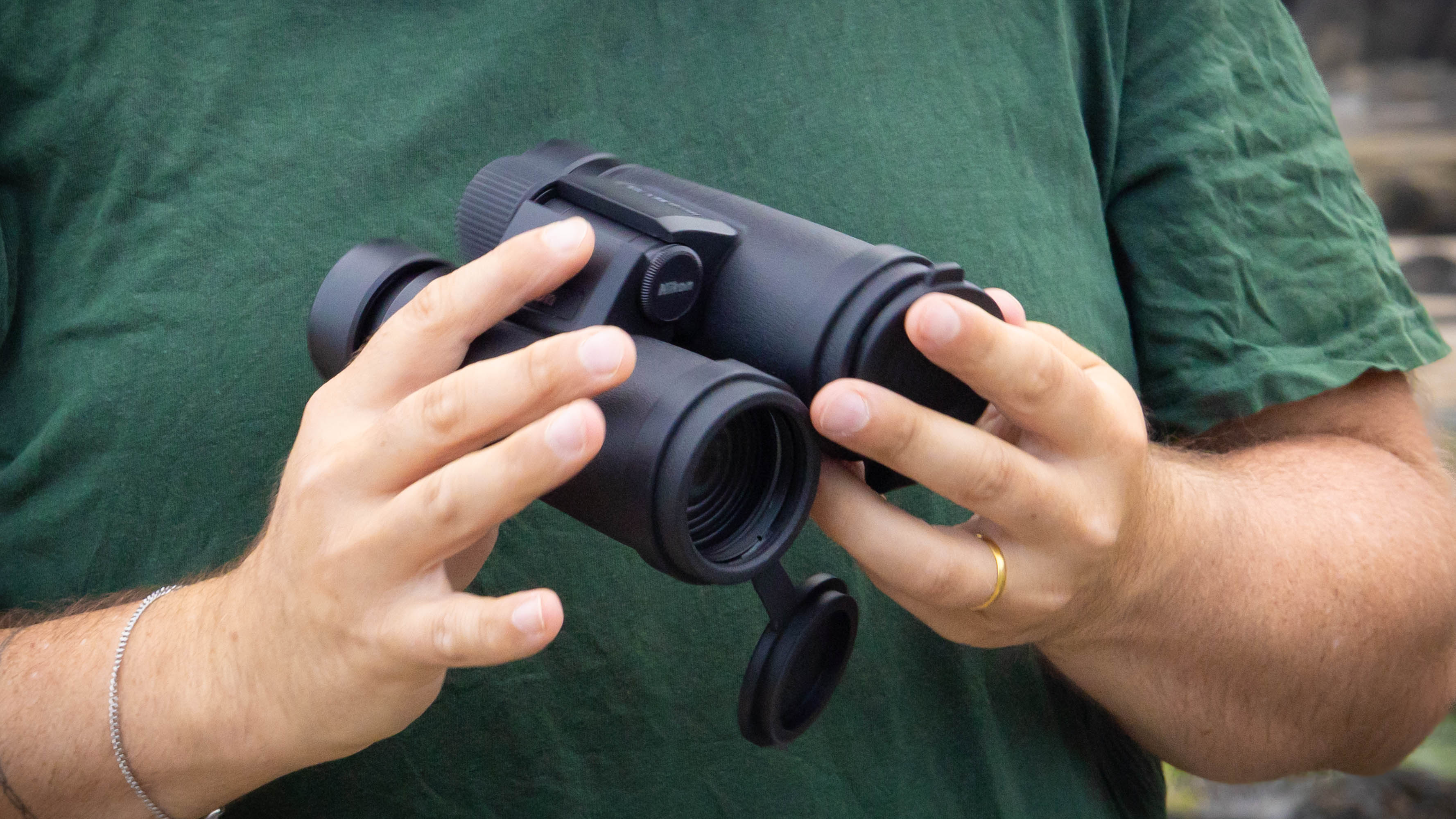
- Slim and compact design
- Locking ring for diopter adjustment
- Durable rubber armor exterior
I adore Nikon design and the Monarch M7’s are no different. Slim and compact, the roof prism design makes the M7’s small enough to pocket in a large jacket or stow away in a sling bag or backpack. The rubber eyecups are twistable for easy adjustment for those with or without eyeglasses, and are comfortable enough against the eyesocket to cushion against the skin.
If you need to attach them to a tripod, a 1/4-inch thread is revealed by unscrewing the knurled cover towards the front of the binoculars. This texture is repeated on the smooth focusing wheel that sits in the middle but towards the back of the hinge mechanism.
A key part of the design and something that sets it apart from many other competitor binoculars at this price point is the locking ring for diopter adjustment. Every single binocular you will likely ever try should have a diopter adjustment ring (the right-sided focus adjustment that allows for focusing differences between the two eyes). But very few, sometimes even on the most expensive models, feature a locking diopter ring. As a beginner, it’s not much of an issue but any observer with tens or hundreds of hours of binocular experience under their belt will immediately appreciate the convenience of a consistent focus for the two eyes.
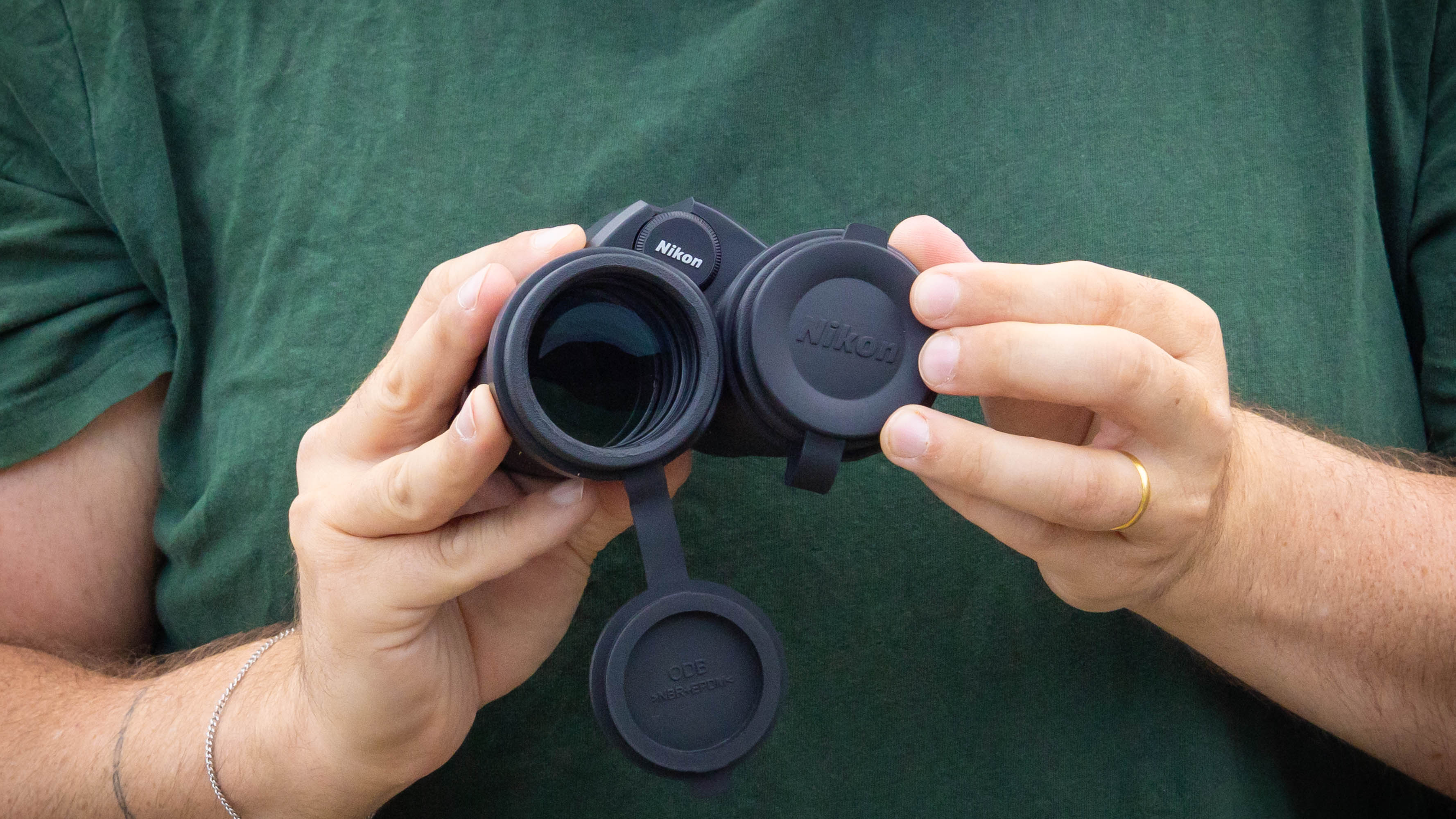
Specifications
Magnification: 8x
Objective lens diameter: 42mm
Angular field of view: 8.3 degrees
Eye relief: 17.1mm
Weight: 23.6 oz (670 g)
Protective rubber armor encases the entire binocular and has a mottled texture throughout which is both attractive and practical. This texture is beneficial both for grip but also for covering up the inevitable rub and scratch marks that binoculars pick up throughout their life, which would otherwise be much more visible on smooth rubber seen on cheaper competitor binocular models.
Rubber lens caps are attached to the binocular through rubber straps that straddle the circumference of the optical tubes. The grip is strong enough to ensure they are not knocked off when putting in and taking them out of a bag but can be removed easily if you would prefer to use or travel without them. They don’t get in the way at all, and unlike other binoculars we’ve reviewed (there’s a pair of Celestron’s that are particularly frustrating for this), the caps do not reattach themselves accidentally when dropping the binoculars down on the neck strap and lifting them back up to the eyes.
Nikon Monarch M7 8×42: Performance

- Clear, sharp views throughout the entire image circle
- Easy to navigate the night sky without having to remove the binoculars from the eyes
- 5.3mm exit pupil allowing for plentiful views
Edge-to-edge sharpness gives clear views throughout the entire image circle, meaning I could use what little peripheral vision I had within the binos to scan for other nearby stars. This kind of detail is so helpful for observers because it allows for easy star hopping. The ability to navigate to other stars and night sky objects without having to take the binoculars away from the eyes or having to move the binoculars much to navigate the night sky is ideal.
For instance, we found it quite simple to move between Ursa Major’s stars Alkaid, Mizar, Alioth, Magrez and Phecda etc and then follow Merak and Dubhe to reach Polaris, the North Star. Also, navigating from Cassiopeia’s Caph and Schedar down to Andromeda’s Almach, we hopped over to Mirach and across to the Andromeda galaxy (M31) with ease, not losing our way once through the sharp, clear views from the Monarch. As with most binoculars, fainter night sky objects like the Andromeda galaxy were hard to make out. Appearing as a fuzzy gray mass when viewed with averted vision but views of galaxies and star clusters of this size are only really improved with either a huge pair of binoculars like the Celestron SkyMaster 25×100 or a decent-sized 6-inch (or greater) reflector telescope or similarly powered catadioptric.

Considering the compactness of the Monarch M7’s roof prism design, views are plentiful thanks to the 5.3mm exit pupil. Some smaller binoculars feel cramped and difficult to look through when observing, and this is a particular bug-bear of mine as it’s the first thing you notice when looking through the binoculars. Fortunately, as with many other Nikon products I’ve tested, they have thought of this for a pleasant experience right from the start.
Nikon Monarch M7 8×42: Functionality
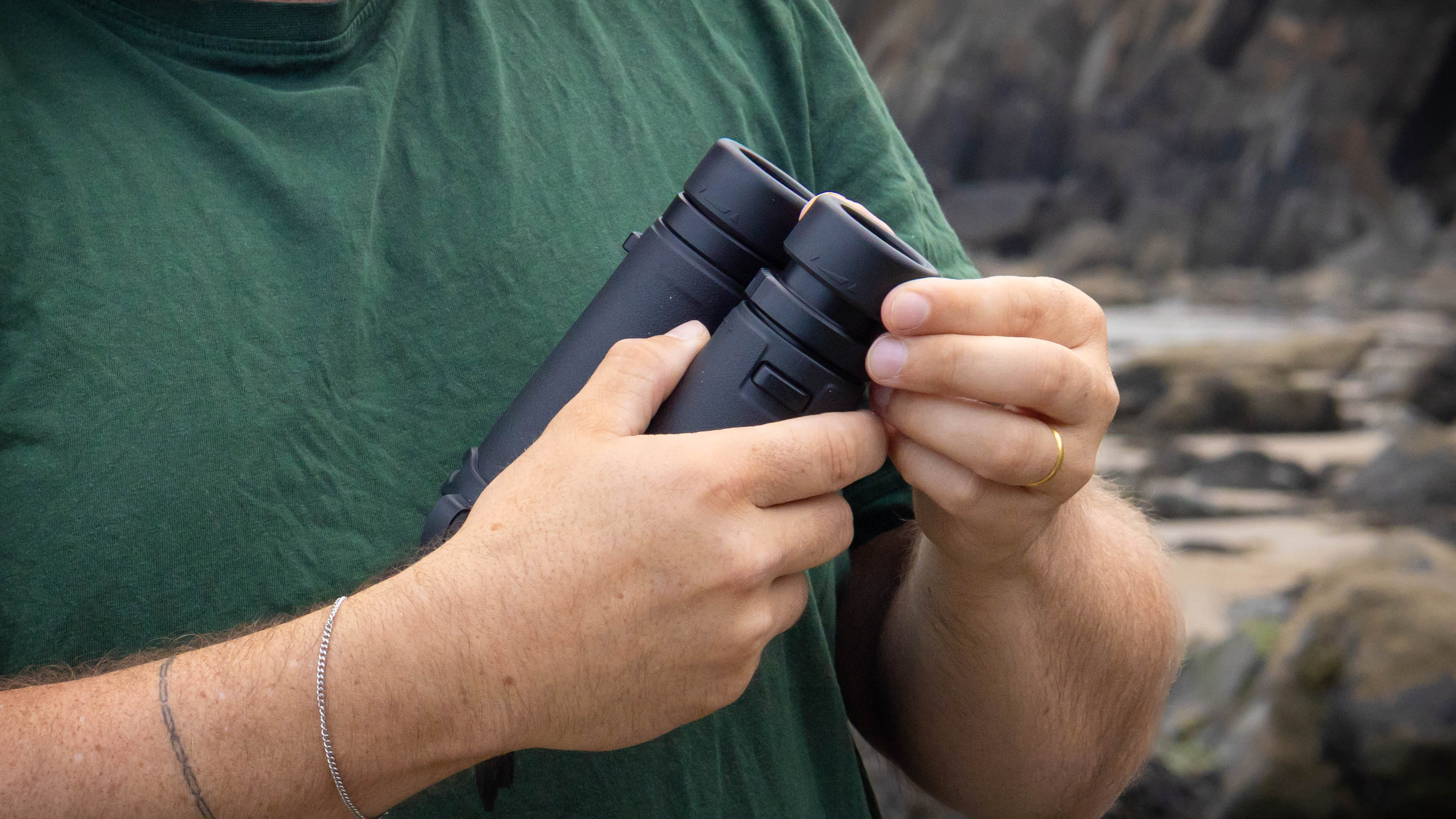
- Waterproofing offers peace of mind if caught in a shower
- Fogproofing makes these binoculars ideal for stargazing in your backyard
The Monarch M7 8×42 binoculars are waterproof and fogproof which is helpful on two points. First, it means using them in the rain or snow won’t damage the interior glass and focusing. While you might think this isn’t so much a problem for astronomers, because precipitation means clouds and no opportunity for stargazing, but as any astronomer will tell you, it doesn’t always stay cloudless and star-studded throughout the night. Banks of cloud and intermittent showers can wash over while you’re observing and, if you’re using binoculars in conjunction with a telescope, then it’s possible to leave them placed on your bag or on the ground during a quick shower whilst trying to cover up the (usually) much more expensive telescope and associated accessories. Having this waterproofing is peace of mind when dodging the rain through the night.
Second, a fogproof binocular means no more internal fogging when moving between warm and cold environments. Internal fogging is the worst because it can’t be immediately wiped away with a microfiber cloth like the externally accessible elements of the glass. At the price point of the Monarch M7’s, I’d expect to see more backyard stargazers enjoying these binoculars and occasionally taking them away on vacation. Usually, this means plenty of popping into and out of the home or a hotel room to do some stargazing and then warming up with a warm drink or waiting for cloud to pass. This temperature shifting causes fogging which makes stargazing most unpleasant, having to wait for the binoculars to come up to (or down to) temperature to reduce this condensation, dragging out observing time and driving down excitement and interest. Fortunately, this problem is overcome with the nitrogen-purging by Nikon in these binos.

User reviews of the Nikon Monarch M7 8×42 binoculars
Online reviews are generally positive with average ratings between popular merchants sitting around 4.5 to 4.8 stars out of 5. Verified customers highlight their appreciation of the clarity and brightness of these binoculars, which parallels what we have experienced in testing.
One customer at B&H Photo Video states, “Whether it’s viewing birds by day or astronomical objects at night, these binoculars are truly superb and deliver a wide, flat field and bright images across the entire field of view.” On Amazon, users praise the locking diopter ring, stating, “I LOVE the locking diopter adjustment (although I recognize this is only a helpful feature for single-user binoculars”, which tallies with our thoughts. It isn’t so much of a problem when passing around the group so long as differences between vision aren’t extreme (even then, the eye relief provided is suitable for those with spectacles to use them simultaneously).
How we tested the Nikon Monarch M7 8×42 binoculars
Over several weeks and months, and with repeat testing over a year and a half, I tested the Nikon Monarch M7 8×42 binoculars in both light-polluted cities, suburban towns, remote rural locations and dark sky nature reserves ranging between Bortle class four and six during this time.
The binoculars got wet in the rain, moved in and out of the home and colder outdoors, in and out of cars and vans and were stowed both in their carry pouch and just on their own, in that time.
This intermediate binocular lends itself to skywatchers that are into astronomy with an enthusiastic passion but perhaps not all that well-versed with the night sky, beyond the average person, for stargazing. Thus, we used them to navigate the northern hemisphere in the summer (on this occasion) and winter (in previous tests) through the most commonly observable constellations such as Ursa Major, Ursa Minor, Boötes, Cassiopeia, Andromeda, Cepheus, Cygnus, etc and even managed to spot some other targets such as the Andromeda galaxy, Orion nebula and the Hercules globular star cluster.
Should you buy the Nikon Monarch M7 8×42 binoculars?
Yes, if you’re looking to invest in a quality pair of binoculars, allowing you to take a step up from your previous beginner-level pair but you’re not keen to drop four figures on binos. I’d heartily recommend the Nikon Monarch M7 8×42 for this reason. Of course, you could opt for one of the other three model variants (8×30, 10×30 or 10×42), which are of equal quality. However, if you are using these regularly for stargazing then we’d perhaps advise against the 8×30 model only, due to the light restriction you would see with the smaller 30 mm objective lenses.
If the Nikon Monarch M7 8×42 isn’t for you
At an intermediate level, based on our extensive testing over the years, we’d recommend the Monarch M7’s over pretty much any other model we’ve tested at this price point. However, absolute beginners might not want to drop so much cash on a pair, to which we’d recommend you look at the Prostaff P3 or the Celestron Nature DX 12×56, both of which have good, durable build qualities, can be useful for a range of purposes (stargazing, wildlife spotting etc) but are also very affordable.
Related articles
If budget isn’t a problem, or if you think these Monarch M7’s aren’t quite refined enough, then we’d recommend you take a look at either Nikon’s top-tier series in the Monarch line, the Nikon Monarch HG 10×42, which comes with even higher quality optics, less chromatic aberration and a locking diopter ring. Another option is the Leica Trinovid 10×42 binoculars which contain much the same quality and build but have a more stylish, sleek design that looks eye-wateringly beautiful.
Stay Informed With the Latest & Most Important News
Previous Post
Next Post
-
 012024 in Review: Highlights from NASA in Silicon Valley
012024 in Review: Highlights from NASA in Silicon Valley -
 02Panasonic Leica Summilux DG 15mm f/1.7 ASPH review
02Panasonic Leica Summilux DG 15mm f/1.7 ASPH review -
 03From Polymerization-Enabled Folding and Assembly to Chemical Evolution: Key Processes for Emergence of Functional Polymers in the Origin of Life
03From Polymerization-Enabled Folding and Assembly to Chemical Evolution: Key Processes for Emergence of Functional Polymers in the Origin of Life -
 04How New NASA, India Earth Satellite NISAR Will See Earth
04How New NASA, India Earth Satellite NISAR Will See Earth -
 05And Thus Begins A New Year For Life On Earth
05And Thus Begins A New Year For Life On Earth -
 06Astronomy Activation Ambassadors: A New Era
06Astronomy Activation Ambassadors: A New Era -
07SpaceX launch surge helps set new global launch record in 2024













